I find myself lucky that a lot of Antarctic history lies in regions of this fascinating continent that I have visited. In 1903, R.F. Scott discovered the Dry Valleys and described them in his journals. One of the lines he wrote about his discovery still rings true with the few people who have a chance to visit the area, "I cannot but think that this valley is a very wonderful place." A simple, but perfect description for an area I called "home" for almost a week.
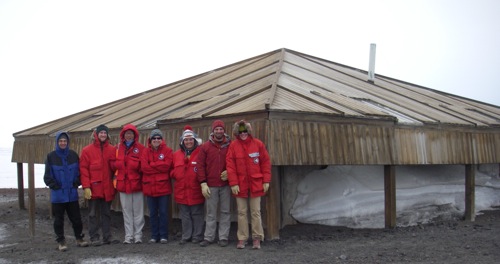 Chip, Collin, Yo, Christine, Sarah, Mike, Heidi.
Chip, Collin, Yo, Christine, Sarah, Mike, Heidi.
History surrounds McMurdo Station, too. Around McMurdo Station there are buildings erected and used over a century ago by some of the most famous Polar explorers. In 1902, before Robert F. Scott happened upon the Dry Valleys, he set up his base of operations within site of today's McMurdo Station. When planning for the so-called Discovery Expedition, named after Scott's vessel, the Discovery, the expedition leaders ordered a pre-fabricated hut to use as living quarters on Ross Island, Antarctica. The hut, built in Australia, disassembled into pieces easily packed onto the Discovery, and reassembled on what is now known as Hut Point was never used by Scott's team for anything more than storage. The crew ended up staying on the Discovery, moored near Hut Point, as the design of the Discovery Hut was better suited for the very hot weather of the Australian Outback, not the bone-chilling cold of an Antarctic winter. In years following R. Falcon Scott's Discovery Expedition, other parties did find shelter in the Hut, but often only as a last ditch effort to survive.
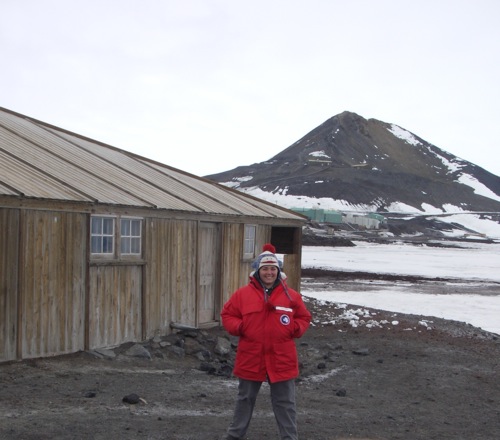 Historical Discovery Hut and Observation Hill with the modern McMurdo squished between them.
Historical Discovery Hut and Observation Hill with the modern McMurdo squished between them.
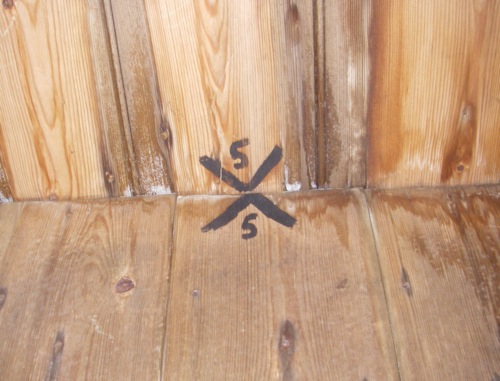 The Discovery Hut is a pre-fabricated structure built for the weather experienced in the Australian Outback- not exactly the weather experienced on Ross Island.
The Discovery Hut is a pre-fabricated structure built for the weather experienced in the Australian Outback- not exactly the weather experienced on Ross Island.
Today, the Hut is a historical site in which only a small number of visitors may enter at one time. The artifacts within the Hut are well preserved and authentic to the era of early Antarctic exploration. There are slowly mummifying seal carcasses still laying where Scott and Ernest Shackleton's men placed them almost 100 years ago, the walls are still caked with soot from the seal blubber the men burned as their heat and light source, clothing, made from pieces of sail cloth and reindeer hide are hung to dry over the long-dead fire, and boxes of dried and canned foods line the walls.
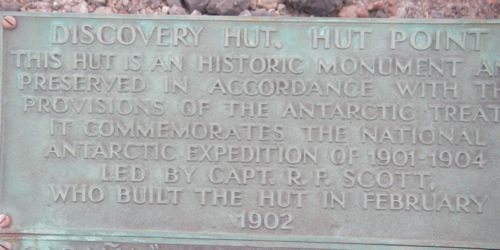 One of the few historical sites around McMurdo Station and Ross Island.
One of the few historical sites around McMurdo Station and Ross Island.
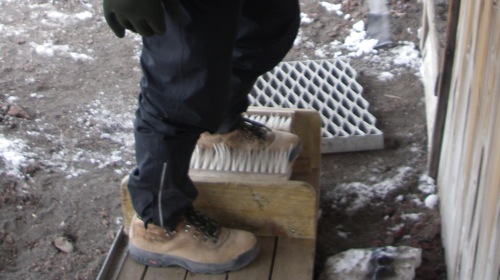 One of the precautions we take to ensure that the Discovery Hut stands for another 100 years!
One of the precautions we take to ensure that the Discovery Hut stands for another 100 years!
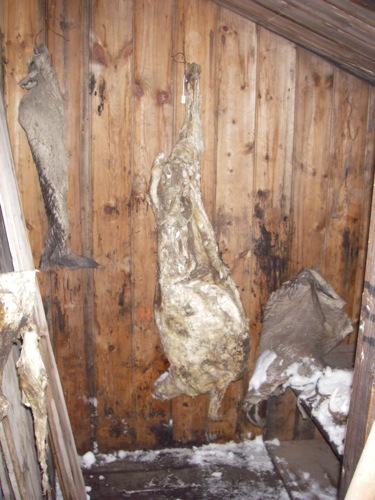 100 year old seal carcasses.
100 year old seal carcasses.
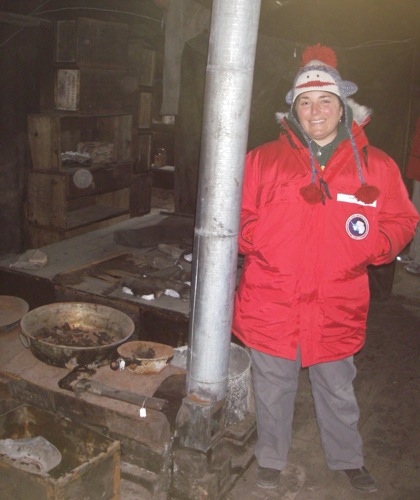 One of the heat sources in the Discovery Hut- back in the day fueled by seal blubber.
One of the heat sources in the Discovery Hut- back in the day fueled by seal blubber.
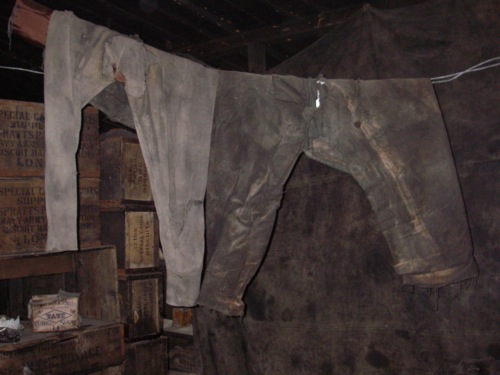 Pants and Long-Johns sewn from sail-cloth by early Antarctic explorers.
Pants and Long-Johns sewn from sail-cloth by early Antarctic explorers.
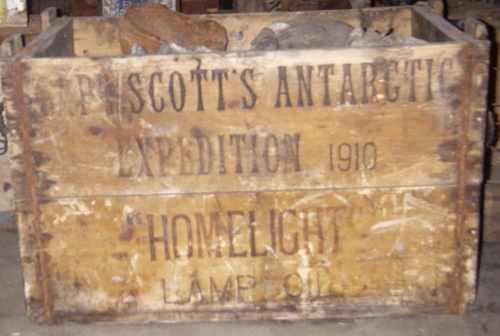 A cargo box for lanterns used by R.F. Scott's expedition.
A cargo box for lanterns used by R.F. Scott's expedition.
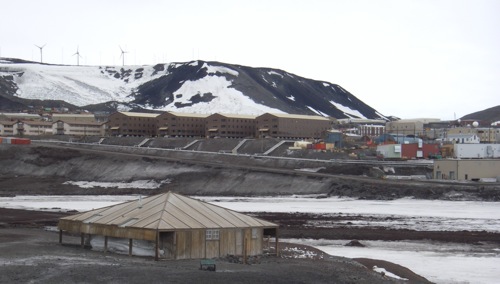 Built in 1902 and well preserved by the Antarctic climate.
Built in 1902 and well preserved by the Antarctic climate.
On the opposite end of McMurdo Station is another historical site- Observation Hill. Observation Hill, a volcanic cone, stands about 230 meters above McMurdo Station and makes for a steep, but relatively quick hike to the top. At the top, after scrabbling over volcanic rocks and rubble, there is a plaque, and a large wooden cross raised in memoriam of R.F. Scott's team of five that did not survive their return journey from the South Pole. The original cross, erected in 1913 for Henry Bowers, Edgar Evans, Laurence Oates, Robert Scott, and Edward Wilson no longer stands as high winds blew it down. The cross that is now at the top of Observation Hill is inscribed with a line from Tennyson's poem, Ulysses: "To strive, to seek, to find, and not to yield."
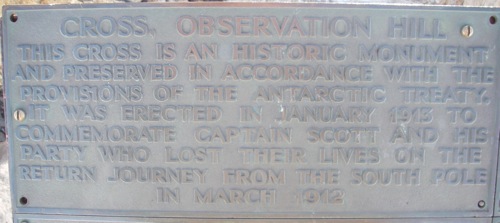 The plaque on Ob Hill.
The plaque on Ob Hill.
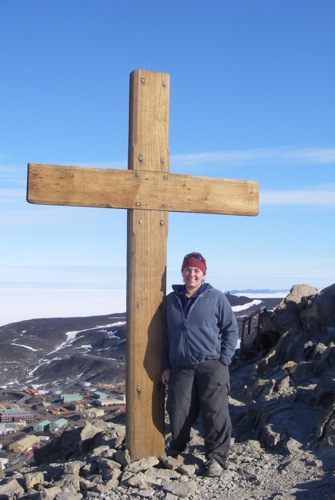 For the members of Scott's South Pole team who did not make it home.
For the members of Scott's South Pole team who did not make it home.
